Stop Mixing Up Gasteria and Haworthia With These 4 Easy Tips
Do you ever get tongue-tied trying to tell those funky speckled succulents apart? Gasteria and Haworthia may look alike, but they’re two totally different plants. Knowing which is which is the key to keeping them happy and healthy! Read on to discover the mind-blowing differences between these succulent cousins.
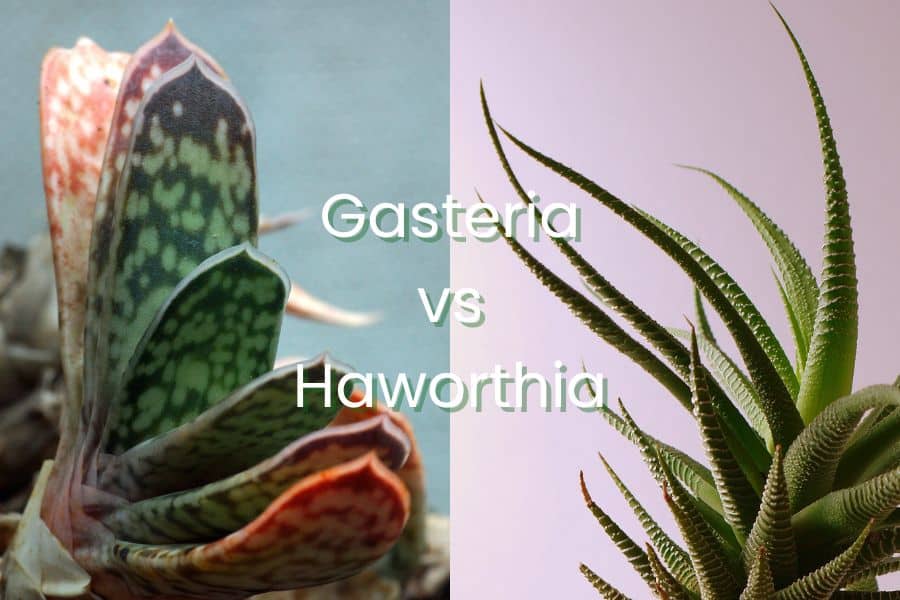
Contents
Gasteria vs Haworthia: Differences
1. The Origins
Gasteria
These aloe look-alikes are natives of South Africa and southwest Namibia. The genus contains around 80 different species related to the aloe family. With quirky nicknames like “ox tongue” and “lawyer’s tongue,” Gasteria gets its real name from the stomach-shaped flowers it produces.
Related Post:
33 Types of Gasteria Succulents [With Pictures]
Haworthia
Also from southern Africa, Haworthia species can be found in South Africa, Namibia, Mozambique, Eswatini and Lesotho. This genus is loaded with around 70 different species, plus lots of subspecies and varieties. Just like their Gasteria cousins, they’re mini aloe impostors!
Related Post:
20 Haworthia Types Of Succulents [With Pictures]
2. Leaf it to the Leaves
Gasteria
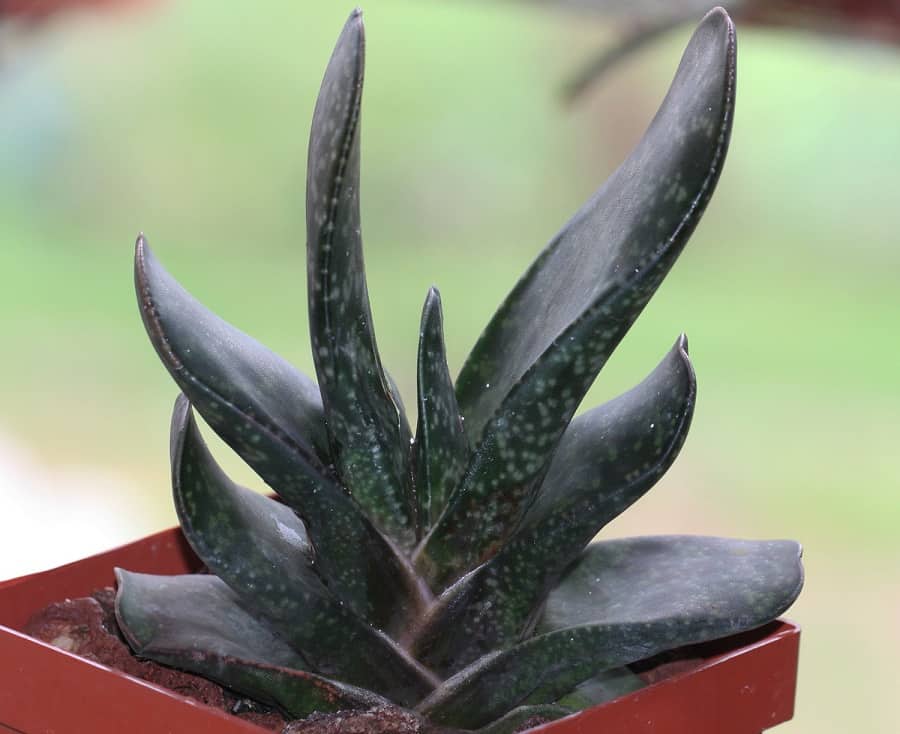
Long, thick, glossy leaves are Gasteria’s claim to fame. The squishy tongue-shaped leaves often have fun white patterns like speckles or stripes. They spiral out from the stem in a cool twisting pattern.
Haworthia
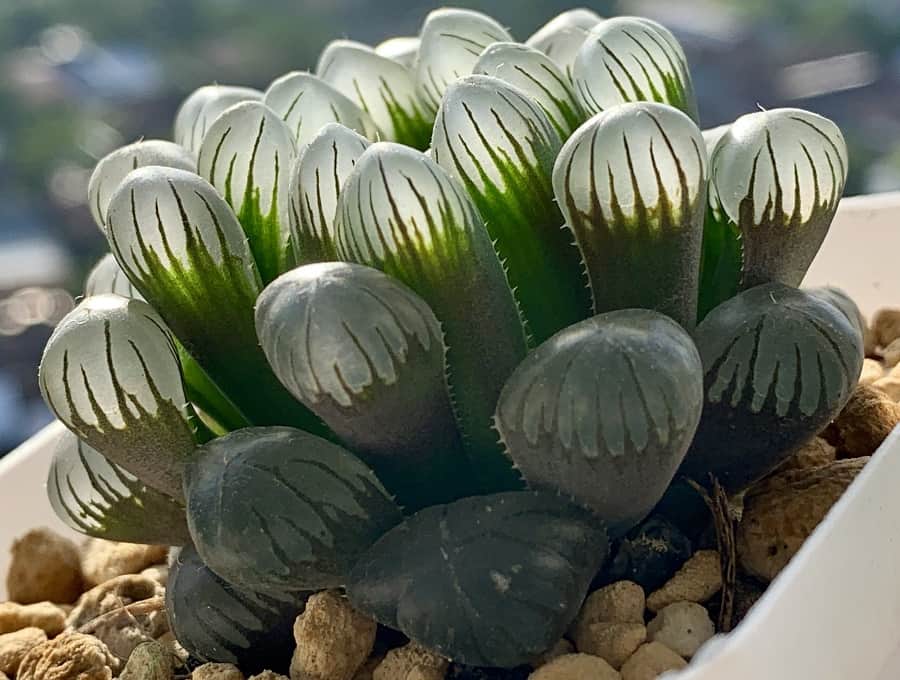
While their leaves are just as plump, Haworthia leaves form cute little rosettes instead of long tongues. The rosettes come dotted, striped or semi-translucent and measure between around 0.5 to 12 inches wide. Some varieties can have short stems up to 20 inches tall, while others are stemless.
3. Flower Power
Gasteria
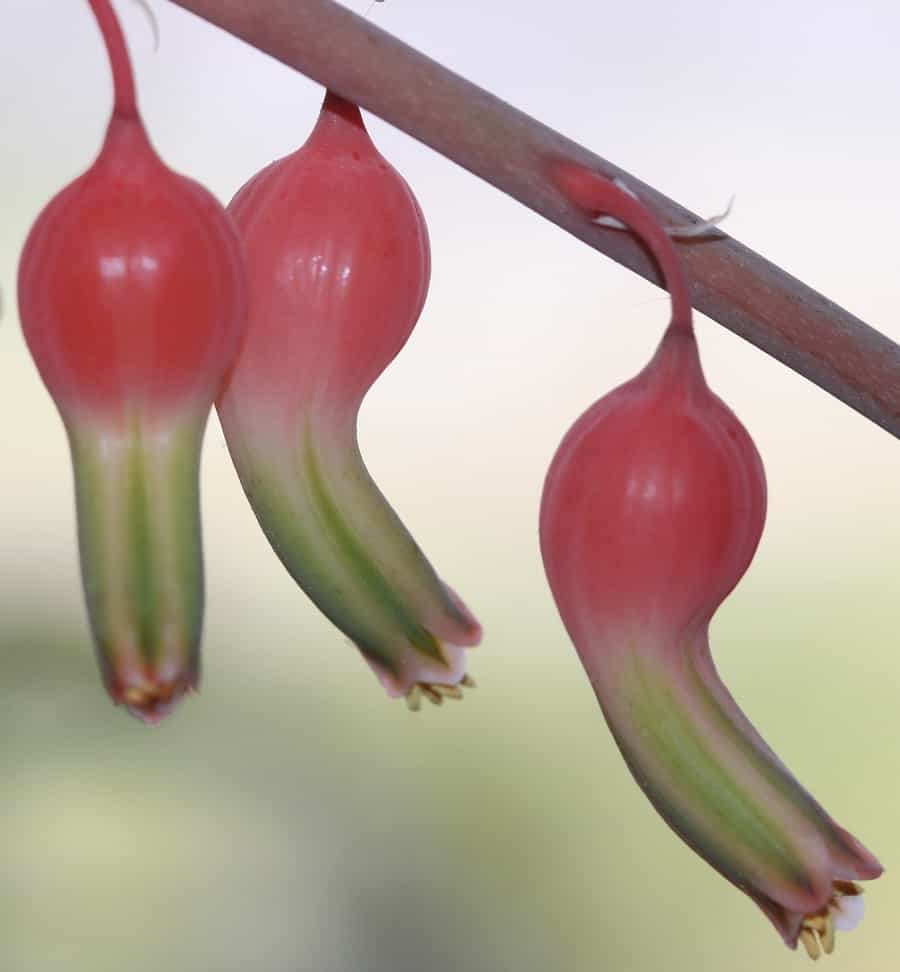
When these succulents hit adulthood, they sprout tubular, bright orange stomach-shaped blooms in winter and spring.
Haworthia
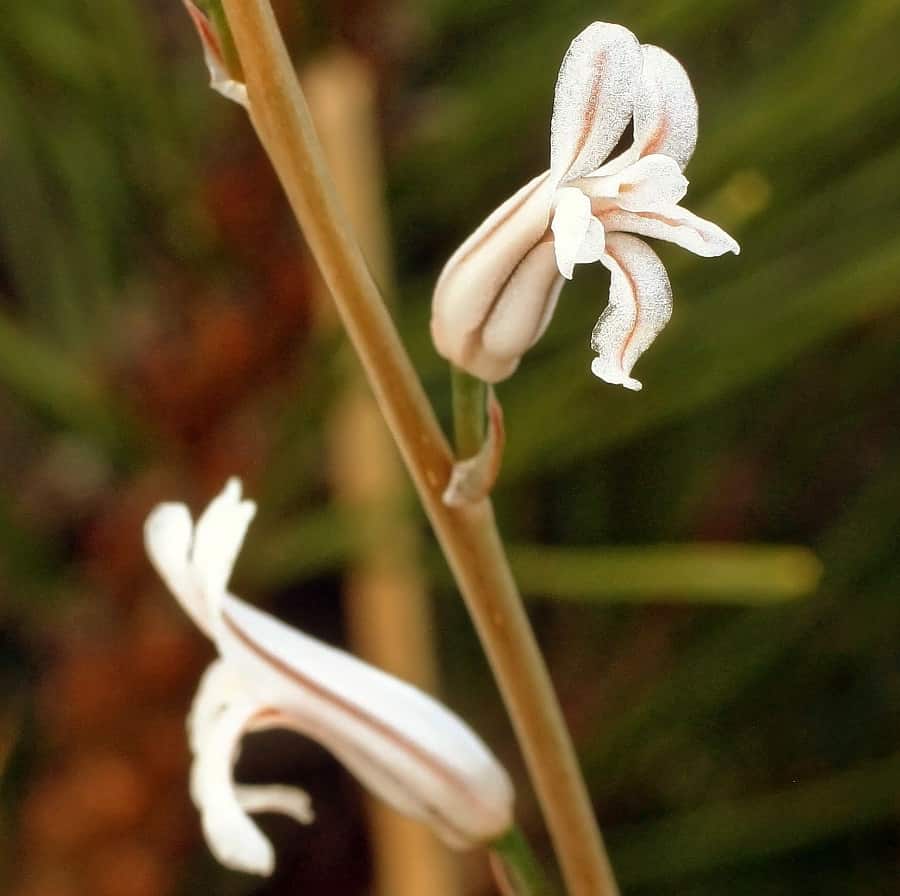
Haworthia keeps things simple with small white flowers.
4. Plant Particulars
Gasteria
Outdoors, Gasteria prefers lightly shaded garden spots and can be planted in spring. As indoor houseplants, you can pot them up anytime. Most Gasteria are pretty tiny, maxing out around 20 inches tall as slow-growers.
Haworthia
Haworthia are excellent easygoing houseplants that can vacation outdoors in summer in frost-free areas. Early spring or summer is prime planting time for these patient pokes who grow gradually.
What They Have in Common
Both genera are South African succulents closely related to aloes in the Asphodeloideae family. They thrive in the same warm subtropical climates from USDA zones 9-11. Indoors or out, they like bright, indirect light and infrequent waterings. Reproducing is easy for both with offsets. Small stature and chill, low-maintenance vibes make them awesome potted pals!
Caring for Your Gasteria and Haworthia
Gasteria Care
- Light: Bright, indirect light like under a tree. No harsh afternoon rays.
- Temperature: Warm summers, cool winters. No frost or humidity.
- Water: Allow to fully dry between waterings. Don’t wet the leaves.
- Soil: Well-draining cactus or succulent mix.
- Pests: Watch for fungal issues from moisture.
- Fertilizer: Feed with cactus fertilizer in spring.
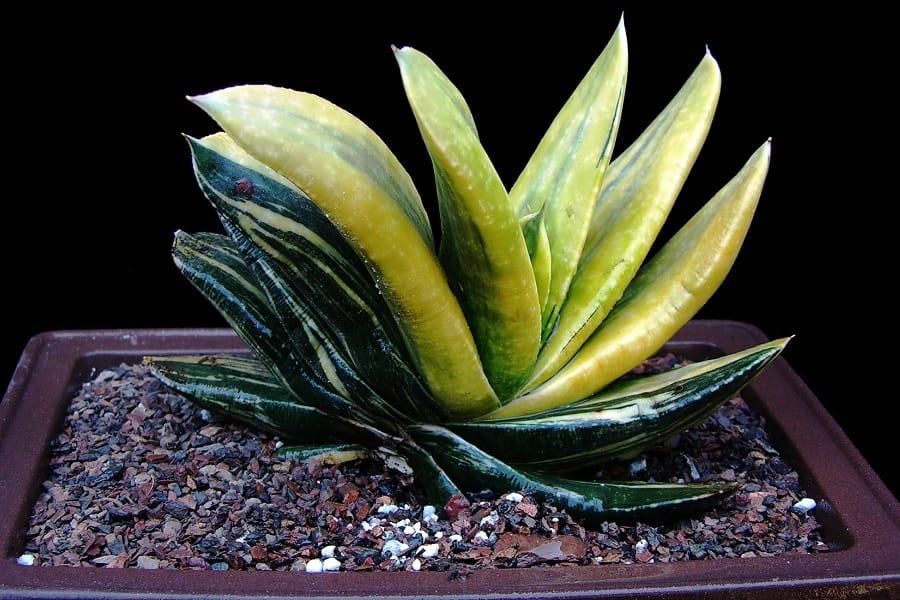
Haworthia Care
- Light: Bright, filtered light is best. Morning sun is ok, not hot afternoon sun.
- Temperature: 70-95°F summer, down to 50°F winter. Good airflow at night.
- Water: Allow top inch of soil to dry between waterings. Don’t let water pool.
- Soil: Gritty, well-draining cactus or succulent mix.
- Pests: Mealybugs and fungus gnats if too moist.
- Fertilizer: Use cactus fertilizer in spring and summer only.
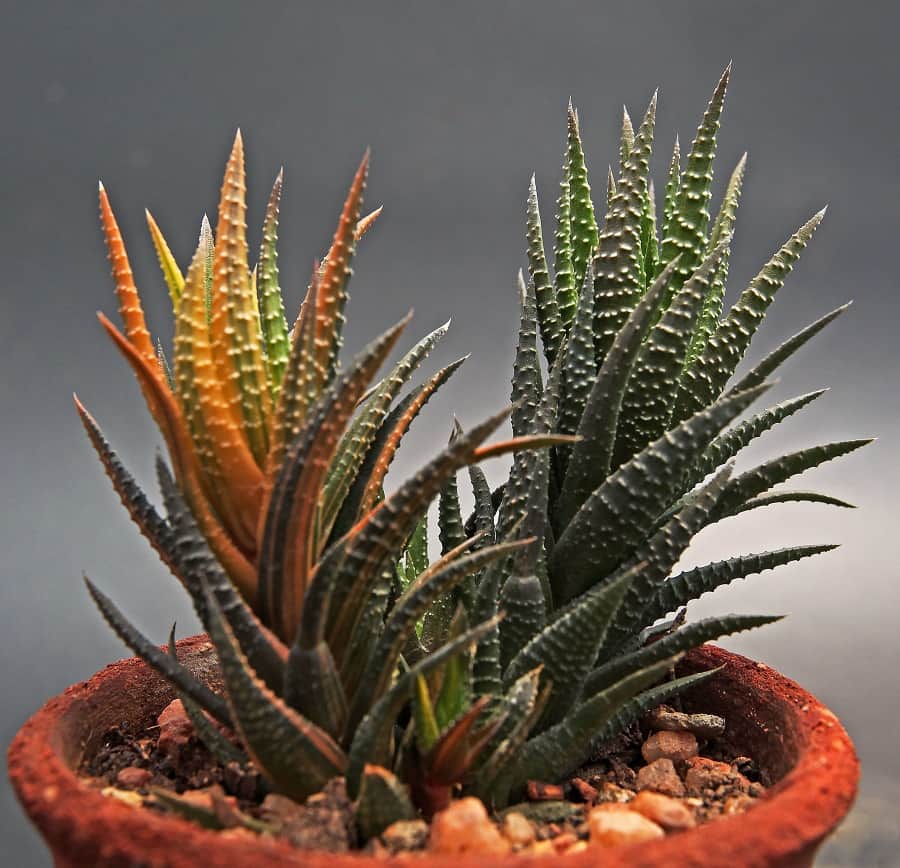
Now that you’re an expert on Gasteria vs Haworthia, telling these quirky cousins apart will be a piece of cake! Just look for those long tongue leaves or cute rosettes. With their speckles, stripes and chill vibes, both make awesome easy additions to your succulent squad.
